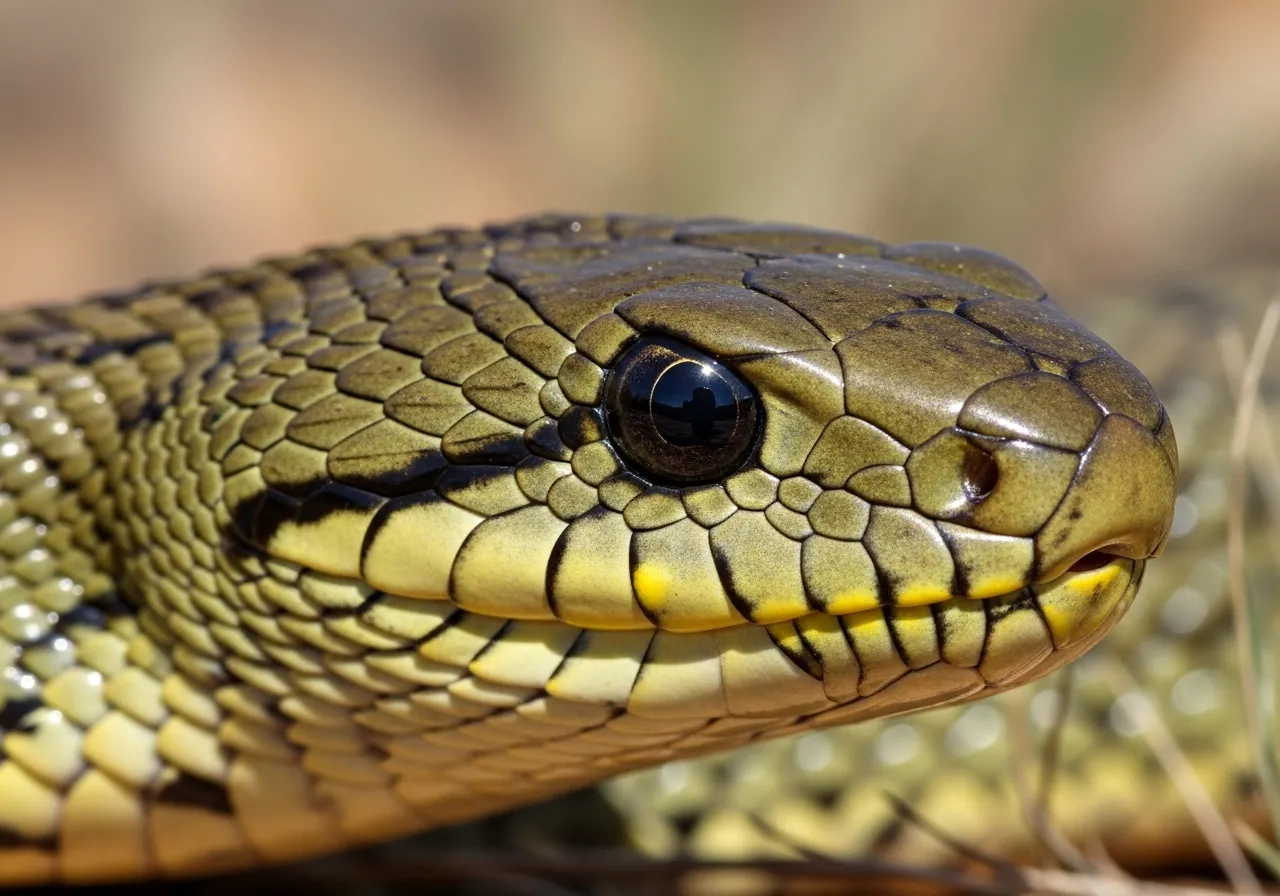
Global Hotspots: The World’s Most Potent Snakes
While venomous snakes are found on every continent except Antarctica, a few species stand out for the sheer potency of their venom. However, as we explore them, notice a recurring theme: the world’s most toxic snakes are often not the ones that pose the greatest threat to people, largely due to their reclusive nature and remote habitats.
The Inland Taipan (Oxyuranus microlepidotus)
Often topping the list as the world’s most venomous land snake, the Inland Taipan is a native of the remote, arid regions of central east Australia. Based on laboratory tests on mice, its venom is by far the most toxic of any terrestrial snake. A single bite contains enough venom to kill over 100 adult humans. Its venom is a complex neurotoxic brew that causes rapid paralysis.
Despite this fearsome biochemical profile, the Inland Taipan is responsible for almost no human deaths. It lives in sparsely populated areas, is exceptionally shy, and prefers to flee from threats. Encounters are rare, and bites are even rarer. The few documented bites have been on herpetologists or snake handlers. This snake is a perfect example of how toxicity alone does not equal danger.
The Eastern Brown Snake (Pseudonaja textilis)
While the Inland Taipan holds the title for toxicity, the Eastern Brown Snake, also from Australia, is far more dangerous to people. Its venom is the second most toxic of any land snake, but its danger is amplified by its habitat and temperament. These snakes thrive in a variety of environments, including agricultural and semi-urban areas, leading to more frequent human encounters. When cornered, it can be nervous and quick to strike. Its venom contains powerful neurotoxins and coagulants that cause blood to clot uncontrollably. The Eastern Brown Snake is responsible for more snakebite fatalities in Australia than any other species.
The Black Mamba (Dendroaspis polylepis)
Found throughout parts of sub-Saharan Africa, the Black Mamba has a formidable and well-earned reputation. It is not the most toxic snake, but it is one of the world’s fastest, largest, and most aggressive when it feels threatened. Reaching lengths of up to 14 feet (about 4.3 meters), it is an active hunter of birds and small mammals in savannas and rocky areas.
A cornered Black Mamba may lift the front third of its body off the ground, gape its mouth to reveal a black, inky lining, and strike multiple times. Its venom is a fast-acting neurotoxin that can cause symptoms within minutes. Before the development of a specific antivenom, a bite from a Black Mamba was almost always fatal. It prefers to avoid humans, but its speed and potent venom make any encounter extremely serious.
The King Cobra (Ophiophagus hannah)
The King Cobra, found across South and Southeast Asia, is the longest venomous snake in the world, capable of reaching 18 feet (5.5 meters). Its scientific name, Ophiophagus, means “snake-eater,” which accurately describes its primary diet. What makes the King Cobra so dangerous is not necessarily the potency of its venom—which is less toxic than that of many other cobras—but the sheer volume it can inject in a single bite. It can deliver enough neurotoxin to kill an elephant.
Like other snakes, it prefers to flee. However, it is famous for its threat display, where it will raise its head high off the ground and spread its iconic hood. Female King Cobras are unique among snakes for building nests for their eggs and guarding them fiercely, making them particularly defensive during the breeding season.















